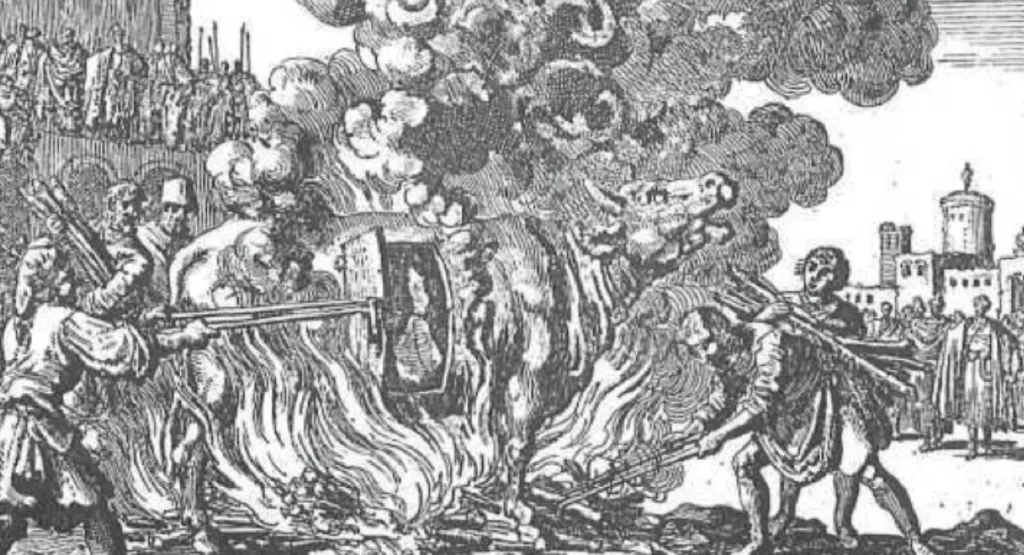Where Was Antipas Martyred?
Introduction
Antipas of Pergamum is a significant figure in early Christian history, recognized as a martyr for his unwavering faith in Christ. His story is primarily documented in the Book of Revelation, where he is referred to as a “faithful witness” who was killed for his beliefs. The exact location of his martyrdom, Pergamum (modern-day Bergama in Turkey), plays a crucial role in understanding the context of his life and death. This article will explore the life of Antipas, the circumstances surrounding his martyrdom, the historical significance of Pergamum, and the impact of his legacy on Christianity.
Who Was Antipas?
Antipas is believed to have been a bishop of the Christian church in Pergamum during the first century AD. He is often associated with the early Christian community that faced severe persecution under Roman rule. The name “Antipas” means “against all,” which reflects his steadfastness in the face of adversity.
Historical Context
Antipas lived during a time when Christians were often persecuted for their beliefs. The Roman Empire was known for its religious tolerance, but this tolerance did not extend to Christians, who refused to worship the Roman gods and the emperor. The early Christians faced imprisonment, torture, and execution for their faith, and Antipas was one of many who suffered for his unwavering commitment to Christ.
Biblical Reference
Antipas is mentioned in Revelation 2:13, where Jesus acknowledges his faithfulness:
“I know where you dwell, where Satan’s throne is; and you hold fast My name, and did not deny My faith even in the days in which Antipas was My faithful martyr, who was killed among you, where Satan dwells.”
This verse highlights the significance of Antipas’s martyrdom and his role in the early Christian community.
The Martyrdom of Antipas
Location of Martyrdom
Antipas was martyred in Pergamum, a city located in what is now western Turkey. Pergamum was known for its significant cultural and religious influence during the Roman Empire. It was home to various temples dedicated to Greek and Roman gods, and it was often referred to as a center of pagan worship.
Circumstances of His Death
According to Christian tradition, Antipas was executed around AD 68 or 92 during the reign of Emperor Nero or Domitian. The specific details of his martyrdom vary among sources, but the most common account states that he was killed by being placed inside a brazen bull, a hollow statue in the shape of a bull. A fire was lit beneath the bull, causing Antipas to suffer a slow and agonizing death.
The Brazen Bull
The brazen bull was a notorious method of execution used in ancient times. It was designed to resemble a bull and had a hollow interior where victims were placed. Once the victim was inside, a fire was lit underneath, and the heat would cause excruciating pain. The screams of the victim would be amplified by the bull’s design, making it sound as though the bull itself was alive and bellowing.
Legacy of Antipas
Antipas’s martyrdom had a profound impact on the early Christian community. His unwavering faith in the face of persecution served as an inspiration for other Christians, encouraging them to remain steadfast in their beliefs despite the dangers they faced. Over time, Antipas became venerated as a saint, and his feast day is celebrated on April 11 in the Eastern Orthodox Church.
Historical Significance of Pergamum
Overview of Pergamum
Pergamum was a prominent city in ancient Asia Minor, known for its rich history and cultural significance. It was a center for learning, art, and religion, boasting a famous library that rivaled the Library of Alexandria. The city was also home to numerous temples dedicated to various deities, including the Temple of Asclepius, the god of healing.
Religious Landscape
The religious landscape of Pergamum was diverse, with a mix of pagan worship and the emerging Christian faith. The presence of various temples and cults created an environment of tension between Christians and the dominant pagan culture. This tension ultimately contributed to the persecution of Christians, including the martyrdom of Antipas.
Pergamum in the Book of Revelation
In the Book of Revelation, Pergamum is referred to as the location where “Satan’s throne” is situated. This phrase has been interpreted in various ways, but it generally signifies the city’s strong association with pagan worship and the challenges faced by early Christians. The mention of Antipas in this context emphasizes the severity of the persecution faced by Christians in Pergamum.
The Impact of Antipas’s Martyrdom
Encouragement for Early Christians
Antipas’s martyrdom served as a powerful reminder of the costs associated with following Christ. His story inspired many early Christians to remain steadfast in their faith, even in the face of persecution. The courage displayed by Antipas and others like him helped to strengthen the resolve of the Christian community during difficult times.
Symbol of Faithfulness
Antipas became a symbol of faithfulness and devotion to Christ. His story is often cited in discussions about martyrdom and the sacrifices made by early Christians. His legacy continues to inspire believers today, reminding them of the importance of standing firm in their faith.
Veneration as a Saint
Over time, Antipas was venerated as a saint in both the Eastern Orthodox and Roman Catholic traditions. His feast day is celebrated on April 11, and he is often invoked for protection against diseases of the teeth and other ailments. The veneration of Antipas highlights the enduring impact of his martyrdom on Christian tradition.
FAQ Section
Q: Who was Antipas?
A: Antipas was a bishop of the Christian church in Pergamum and is recognized as a martyr for his unwavering faith in Christ.
Q: Where was Antipas martyred?
A: Antipas was martyred in Pergamum, which is located in modern-day Turkey.
Q: How did Antipas die?
A: Antipas was executed by being placed inside a brazen bull, which was then heated to cause a slow and painful death.
Q: When did Antipas live?
A: Antipas is believed to have lived during the first century AD, with his martyrdom occurring around AD 68 or 92.
Q: What is the significance of Antipas in Christianity?
A: Antipas is considered a symbol of faithfulness and devotion to Christ. His martyrdom inspired early Christians to remain steadfast in their beliefs.
Q: What is the feast day of Antipas?
A: The feast day of Antipas is celebrated on April 11 in the Eastern Orthodox Church.
Q: How is Antipas remembered today?
A: Antipas is venerated as a saint, and his story serves as a reminder of the sacrifices made by early Christians for their faith.
Q: What does the Bible say about Antipas?
A: Antipas is mentioned in Revelation 2:13 as a “faithful witness” who was martyred for his faith in Christ.
Conclusion
Antipas of Pergamum is a significant figure in early Christian history, remembered for his unwavering faith and martyrdom. His story serves as an inspiration for believers, highlighting the importance of standing firm in one’s beliefs despite persecution. The historical context of Pergamum and the challenges faced by early Christians provide a deeper understanding of Antipas’s legacy and the impact of his martyrdom on the Christian faith.For more information on Antipas and his significance in Christianity, you can refer to the Wikipedia page on Antipas of Pergamum.
| Aspect | Details |
|---|---|
| Name | Antipas of Pergamum |
| Location of Martyrdom | Pergamum (modern-day Bergama, Turkey) |
| Method of Death | Executed by being placed in a brazen bull and heated |
| Estimated Year of Death | AD 68 or 92 |
| Biblical Reference | Revelation 2:13 |
| Feast Day | April 11 |
| Significance | Symbol of faithfulness and martyrdom in early Christianity |
Antipas’s story continues to resonate with believers today, serving as a powerful reminder of the sacrifices made by early Christians and the enduring legacy of faith.



